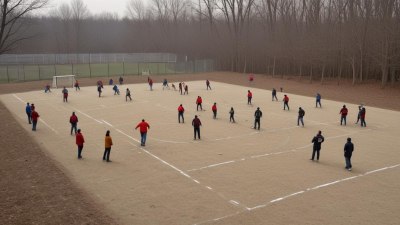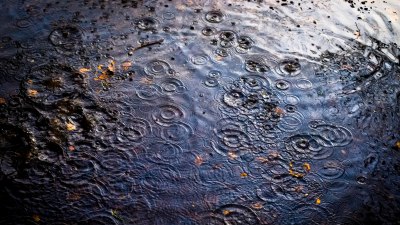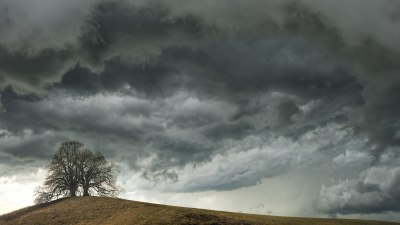How to Decode Clouds Like You’re a Sky Detective
Discover the art of cloud identification and learn to interpret the sky like a pro!

The sky, a vast expanse above us, serves as a canvas displaying a multitude of clouds, each with their own shape and significance. To decode clouds effectively, one must understand the basics of cloud types, their formation, and the weather patterns they indicate.
Understanding Cloud Types
Clouds can be broadly categorized into three main types: cirrus, cumulus, and stratus. Each type has unique characteristics that provide clues about the weather. Cirrus clouds are high-altitude clouds, thin and wispy, often indicating that a change in the weather is likely. Cumulus clouds are the fluffy white clouds we often associate with fair weather, but they can develop into larger thunderstorm-forming clouds. Stratus clouds typically form in layers, creating a gray overcast sky and often bringing light precipitation.
Cirrus Clouds
Cirrus clouds (Ci) are high, thin clouds that appear white and wispy, often resembling feathers. They form at altitudes above 20,000 feet (6,000 meters) and are composed of ice crystals. The presence of cirrus clouds can indicate an approaching warm front, suggesting that rain may come within the next 24 hours. Their delicate nature and high altitude make them less significant for immediate weather changes but important for long-term forecasting.
Cumulus Clouds
Cumulus clouds (Cu) are well-known for their characteristic fluffy, white appearance resembling cotton balls. These clouds typically form at lower altitudes and indicate fair weather. However, when they grow tall and develop into cumulus congestus or cumulonimbus clouds, they can signal thunderstorms. Observing the height and development of cumulus clouds can provide clues about potential weather disturbances.
Stratus Clouds
Stratus clouds (St) appear as uniform gray layers covering the sky, often bringing light drizzle or mist. They usually form at lower altitudes and indicate stable weather conditions. Stratus clouds can often lead to a prolonged period of overcast skies, cooling temperatures and contributing to fog when they are thick enough.
Special Types of Clouds
Beyond the basic types, there are also special cloud formations to observe, including nimbostratus, altostratus, and cirrostratus. Nimbostratus clouds are thick, dark clouds associated with continuous and steady precipitation. Altostratus clouds, which are gray or blue-gray, typically precede storms with continuous rain. Cirrostratus clouds are thin, ice-crystal clouds covering the sky, often creating a halo effect around the sun or moon, indicating moisture at higher altitudes.
The Role of Humidity and Temperature
Understanding humidity and temperature is crucial when decoding clouds. High humidity levels contribute to cloud formation as it allows moisture to condense into droplets. Warm air rising creates low pressure areas, causing air to cool and moisture to condense into clouds. Recognizing temperature and humidity changes can provide insights into the development of certain cloud types.
Weather Forecasting Using Clouds
As a sky detective, you can forecast the weather by observing cloud patterns. For instance, the presence of cumulus clouds may indicate fair weather, while dark nimbostratus clouds would suggest rain is on the way. Understanding the relationship between different cloud types can enhance your ability to predict upcoming weather conditions accurately.
Cloud Patterns and Movements
Paying attention to the movement of clouds is another essential aspect of cloud decoding. Clouds generally move from west to east due to prevailing winds. By observing the speed and direction of cloud movement, one can predict whether bad weather is approaching or if the skies will clear. Rapidly moving clouds may signal an incoming storm, while slower clouds may indicate clear skies ahead.
Cloud Observations and Recordings
Keeping a cloud journal is an effective way to hone your sky-detective skills. Record the types of clouds you observe, their shapes, movements, and the weather conditions surrounding them. With time, your journal will become a valuable resource to compare weather changes and predictions based on your observations.
The Influence of Geography
Geography plays a crucial role in cloud formation and types. Coastal areas tend to have different cloud patterns compared to inland regions. For example, coastal regions often experience stratus or nimbostratus clouds due to the influence of ocean moisture. On the other hand, mountainous regions may see more cumulus and cumulonimbus clouds due to orographic uplift, where rising air over mountains cools and condenses to form clouds.
Engaging with Cloud Communities
Joining cloud observation communities can enhance your understanding of clouds and weather. Many online platforms allow enthusiasts to share their observations, photographs, and experiences. Engaging with these communities can provide insights from fellow cloud aficionados and help improve your cloud-detective skills.
Clouds and Climate Change
Understanding clouds also involves awareness of climate change and its impact on weather patterns. Research shows that climate change affects cloud properties, including their height, thickness, and precipitation potential. Observing changes in cloud behavior can provide context on how climate change is reshaping our weather.
Becoming a Cloud Detective
In conclusion, decoding clouds like a sky detective involves recognizing different cloud types, understanding their significance, and observing their patterns. By honing your observation skills and recording your findings, you can become adept at predicting weather changes just by gazing up at the sky. Remember that the sky is a living entity, changing with time and the atmosphere, offering endless opportunities for exploration and discovery.











